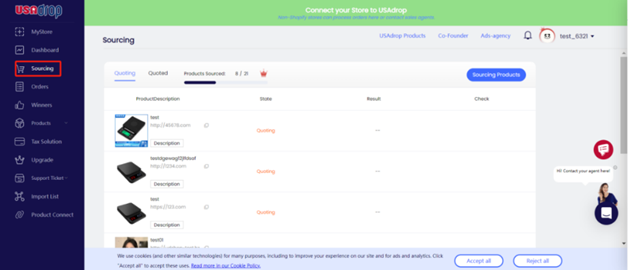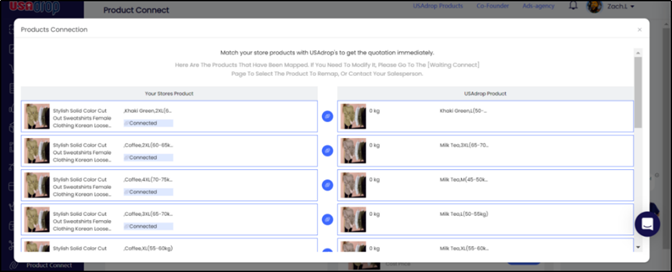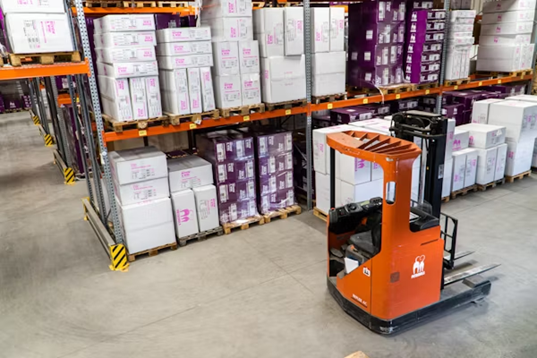
The future of this winning business model is subject to how technology is transforming dropshipping.
Because technology is promising to reshape the industry significantly.

How Technology is Transforming Dropshipping: A Shift in the Global E-commerce Value Chain
Traditional retail involves a complex value chain with manufacturers, distributors, retailers, and consumers.
In contrast, dropshipping simplifies this process by allowing sellers to focus on marketing and sales while suppliers handle inventory and shipping.
This model eliminates the need for significant capital investment in inventory management and logistics.
The Role of Automated Dropshipping Software
Leading e-commerce companies prefer using automated dropshipping software to streamline their operations. This software simplifies running a store by seamlessly integrating inventory management tasks and various automated features that streamline the process of tracking and managing inventory levels without manual intervention. Some of the most useful and innovative features include:
Sourcing via Links with USAdrop’s Automated System

Dropshipping plugins can source products directly from other platforms. USAdrop offers an easy-to-use sourcing system based on product links. Simply paste the link to the product you want, and your personal USAdrop agent will automatically provide the most competitive price available. Our agent compares verified manufacturers and suppliers, ensuring you get the best deal with guaranteed price, quality and delivery times.

Advanced Image-Based Product Sourcing with USAdrop
Besides sourcing through product links, USAdrop also offers advanced sourcing using images. You can find the lowest price by simply uploading an image of the product. The process involves:
Image Recognition: Utilizes image recognition technology to find matching products from our large product database.
Seamless Importing: Easily import the matched product into your store with all necessary details.

Automated dropshipping plugins on Shopify facilitate seamless product importing from suppliers’ catalogs directly into your store. This process includes:
Bulk Importing: Allows bulk importing of product data, including descriptions, images, and pricing.
One-Click Importing: Simplifies the process of adding new items to the store by allowing individual products to be imported with a single click.
Pre-mapped Fields: Ensures consistency and accuracy when importing data by having pre-mapped fields for product information.
Product Details Extraction: Ensures comprehensive and up-to-date product listings on your Shopify store.
Benefits of Automated Product Importing and Sourcing
- Efficiency:Saves time by automating the process of adding new products to your store.
- Accuracy:Reduces errors associated with manual data entry, ensuring accurate product listings.
- Scalability:Allows for easy scaling of product offerings without the need for significant manual effort.
- Competitive Advantage:Keeps your store updated with the latest products and trends, enhancing competitiveness in the market.
- Timeliness:Ensures your order are processed immediately and automatically, preventing delays or incomplete orders.
By leveraging these automated features in dropshipping plugins, Shopify store owners can streamline their operations, maintain accurate and attractive product listings, and focus more on marketing and customer engagement.
Other automated features that are widely used in the dropshipping industry include:
Real-Time Updates: Automated systems provide real-time inventory updates, ensuring dropshippers always know the stock status and avoid selling out-of-stock items.
Demand Forecasting: By analyzing sales data and trends, automated inventory management can predict future demand, helping dropshippers maintain optimal stock levels and reduce the risk of overstocking or stockouts.
Order Management: Automation handles order fulfillment by routing orders to the appropriate suppliers, tracking shipments, and updating customers on their order status.

By leveraging these technologies, dropshippers can enhance their operational efficiency, improve customer satisfaction, and focus on scaling their business.
How technology is transforming dropshipping: Blockchain for Supply Chain Transparency
Blockchain technology is set to transform dropshipping by providing greater accountability and transparency throughout the supply chain. Blockchain technology in dropshipping can significantly enhance transparency, security, and efficiency throughout the supply chain. Here are some key points on how blockchain can be integrated into dropshipping:

Supply Chain Transparency: Blockchain provides an immutable ledger that records every transaction. This transparency allows dropshippers, suppliers, and customers to track the journey of a product from manufacturer to end consumer, ensuring authenticity and reducing fraud.
Smart Contracts: Smart contracts on a blockchain can automate various processes, such as order processing, payment releases, and shipping updates. These contracts execute automatically when predefined conditions are met, reducing the need for intermediaries and enhancing efficiency.
Secure Transactions: Blockchain technology ensures secure and tamper-proof transactions. Each transaction is encrypted and linked to the previous one, making it nearly impossible for unauthorized changes to occur.
Reduced Costs and Errors: By automating and securing transactions, blockchain can reduce the administrative costs and errors associated with manual processing. This efficiency can lead to lower operational costs and better profit margins for dropshippers.
Dispute Resolution: With all transactions recorded on a blockchain, resolving disputes becomes easier. Both parties can access the transaction history to verify details and address any issues based on transparent and accurate records.
Customer Confidence: The transparency and traceability offered by blockchain can enhance customer trust. Customers can verify the authenticity of products and the ethical practices of suppliers, leading to greater customer satisfaction and loyalty.

By incorporating blockchain technology, dropshipping businesses can streamline operations, build trust with customers, and stay ahead in a competitive market.
Voice Commerce and IoT Integration
Voice commerce and the Internet of Things (IoT) will offer new opportunities for customer interaction and sales growth in dropshipping. Future dropshipping software will integrate with voice commerce systems like Siri, Google Assistant, and Amazon Alexa, enabling users to place and monitor orders through voice commands. IoT technologies, such as voice-activated appliances and smart refrigerators, will further expand the reach of online retailers. Voice commerce will also provide insights into consumer preferences, helping businesses create products based on customer needs and suggestions.
AI-Powered Automation
Artificial intelligence (AI) is revolutionizing e-commerce and dropshipping systems by making inventory management and product synchronization more efficient. AI-powered dropshipping software can forecast trends in demand and future product requirements, preventing stockouts and optimizing inventory levels.

How technology is transforming dropshipping
AI chatbots enhance customer service and provide personalized product recommendations. AI-driven analytics also help businesses understand customer behavior and tailor marketing strategies accordingly.
The impact of how technology is transforming dropshipping is signficant, enabling collaboration between online retailers, suppliers, and consumers. Companies like USAdrop use AI to automate the dropshipping process, offering analytics and optimizing listings for better conversions. AI and automation also allow for faster order fulfillment and more efficient package delivery. By automating repetitive tasks, dropshipping businesses can achieve better ROI and focus on growth.
Integration with Marketplaces and Social Commerce Platforms

The evolution of dropshipping software has facilitated seamless integration with online marketplaces and social commerce platforms. Platforms like Shopify, Amazon, and eBay work well together, enabling businesses to reach a larger audience. Automated dropshipping software simplifies the integration with social commerce networks and marketplaces, allowing for influencer partnerships and targeted advertising.
Sustainability and Ethical Sourcing
Technology in dropshipping software can help businesses become more sustainable and comply with regulations. These tools monitor suppliers’ sustainability and provide transparency about product origins. AI graphics and imagery can inform customers about the social and environmental impact of products, fostering an interactive and loyal customer base.
Personalization and Customer Experience
Advanced dropshipping software technologies enable quicker product development and improved customer experiences. By leveraging customer data, businesses can create customized products and tailored marketing strategies. Technologies like VR and AR will enhance customer engagement and make shopping more interactive.

How technology is transforming dropshipping: Final Thoughts
The impact of technology on the dropshipping industry is profound, with advancements in AI, blockchain, voice commerce, IoT, and predictive analytics shaping the future of this business model. As technology continues to evolve, dropshipping will become more efficient, sustainable, and customer-centric, driving growth in the global e-commerce market.
As AI and automation take center stage, dropshipping businesses will particularly benefit from improved analytics, better product identification, and increased sales.
Follow USAdrop’s blog and social media channels to learn more about how technology is transforming dropshipping.
